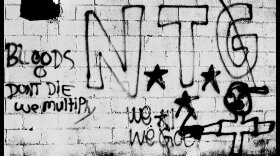From Texas Sandard:
Sometime in the 1990s, concerns about rising crime rates in America's urban centers began to focus on Los Angeles. Some saw it as as ground zero for gangs. Stories about the Bloods and the Crips and other gangs often overlooked a more complicated history that preceded events on the West Coast by several decades. At the same time, they touched on many of the underlying issues, like poverty and social isolation.
Mike Tapia is associate professor in the Department of Criminal Justice at New Mexico State University, and author of the new book, "Gangs of the El Paso-Juárez Borderland." It's a unique history that reflects diverse subcultures on both sides of the border, and the law.
Tapia says his first job was a gang intervention social worker. That experience got him interested in the history of gangs. He says youth in El Paso and on the border adopted what's called the pachuco style.
"It was a really historic period that had a lot to do with, I guess, a form of resistance that was manifested in style of dress ... street-savvy youth from the borderland region," Tapia says.
He says some attribute pachuco style to other regions, including Los Angeles, but he believes it came from the border. The young, working-class men in borderland barrios could be identified as gang members, but Tapia says there was more to it.
"This was really a kind of a subcultural resistance of Mexican-American youth or Chicano youth, in particular," Tapia says.
He also says the term "gang" had a more benign meaning back then.
"It really has changed over time," Tapia says. "It's become a lot more insidious; it’s become something tied up in drugs and violence. It really has morphed over time."
Written by Shelly Brisbin.



